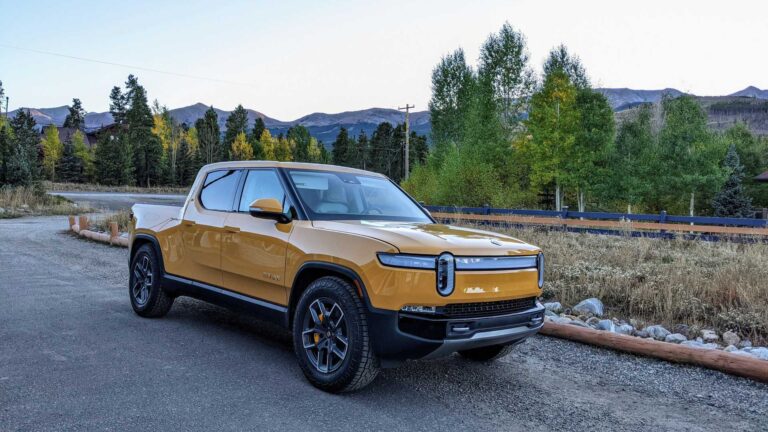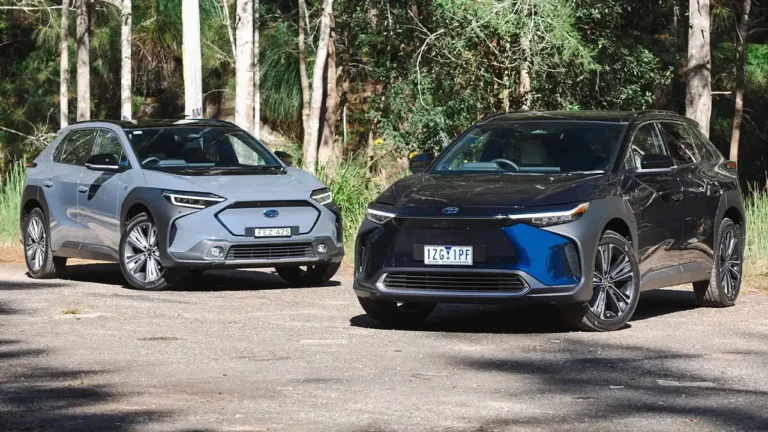The Air has already proven itself. From the 10Best-winning rear-wheel-drive Air Pure to the Lightning Lap–dominating, tri-motor Air Sapphire, this cutting-edge luxury sedan impresses with its dynamic capabilities and efficiency. However, certain aspirations for the Air remained unrealized—whether due to financial constraints, limited resources, or time. The Gravity represents Lucid’s opportunity to apply those hard-earned lessons in its second act. This isn’t just a larger Air with an optional third row. While that might have been acceptable, Lucid clearly aims higher.
Building on Success
That evolution is apparent from the moment you slide behind the wheel. The steering device itself is distinct—more of a rectircle than a squircle—and it fronts a dashboard layout that is both innovative and comfortably familiar. Unlike the Air, where drivers must look around or over the wheel to read key information, the Gravity’s blade-style display sits higher, ensuring all information is easily visible. The Clearview Cockpit display is also larger and now uses OLED technology with a crisp 6K resolution. Most of the interface is capacitive, and while the driver-focused readout area isn’t interactive for now, a future OTA update could change that. The center-mounted Pilot Panel has also evolved—it’s now positioned higher and uses a landscape layout, marking a clear improvement over the Air’s lap-level portrait screen.
Lucid’s latest software interface, dubbed UX 3.0, is significantly more refined and addresses many of the Air’s pain points. Drivers can now view both the battery’s state-of-charge and the estimated remaining range at once. In addition, users can choose between range calculations based on EPA ratings or a dynamic projection that reflects their recent driving behavior, with greater emphasis on the last 10 miles.
Touchpads located on the steering wheel enable intuitive swiping—the left controls widgets adjacent to the gauges, while the right governs infotainment options on the upper display. A set of three double-circle buttons—positioned below the right touchpad and at each end of the control bar beneath the Pilot Panel—are customizable, offering quick access to features such as drive mode selection or seat climate adjustments.

Space Without Waste
The Gravity’s interior mirrors the Air’s clean, forward-thinking design philosophy, blending a variety of materials including textured fabric on the dash. Standard upholstery is leatherette, with genuine leather available as an upgrade.
Lucid continues to excel in cabin packaging, crafting an interior that feels expansive and intelligently organized. Just as in the Air, rear-seat passengers enjoy generous space, whether in five- or seven-passenger configurations. The second row provides ample comfort, while the third row can accommodate full-size adults with surprising ease—headroom included.
Although the Gravity’s sleek exterior doesn’t suggest it, its interior packaging approaches that of a minivan in terms of practicality—sans sliding doors. The rear doors open to a full 90 degrees, and second-row seats motor forward to ease access to the third row. Fold all the rear seats (using buttons for the second row and manual releases for the third), and the Gravity yields up to 98 cubic feet of cargo room, plus an additional six cubic feet under the rear load floor. The eight-cubic-foot front trunk adds further utility and can be fitted with a cushion and backrest to serve as a bench. For context, this overall cargo volume surpasses the boxier Rivian R1S and nears what’s available in a Chrysler Pacifica—all within a low-profile, aerodynamic form.
Charging Ahead
Lucid’s recipe for extending range is no secret: prioritize aerodynamics and manage weight. The Gravity’s 123-kWh battery enables impressive range, with the Grand Touring model offering 828 horsepower and 909 pound-feet of torque. Even so, estimated range spans from 386 miles (three-row with larger wheels) to 450 miles (two-row with standard staggered wheels—20-inch front, 21-inch rear).
Charging compatibility is extensive. The Gravity now features a Tesla-style NACS port, a late-stage addition that required relocating the charge port to the rear corner to better interface with Supercharger cables. Peak charge rates reach 400 kilowatts on 1000-volt systems, and up to 225 kilowatts on 500-volt chargers—thanks to an innovative voltage boosting technique using the drive unit to sync with the 926-volt battery architecture. Adapters for CCS and SAE J1772 come standard. Lucid claims the Gravity can gain 200 miles of range in just 11 minutes under ideal conditions—a claim that aligns with real-world data from the Air.

Suspension: Air Apparent
Despite its formidable powertrain, the Gravity delivers that performance with poise. With dual motors propelling it to a claimed 0–60 mph time of 3.4 seconds, there’s no noticeable wheel slip or instability. However, a touch of rear squat under acceleration was observed—an area where stiffer tuning might better manage the vehicle’s mass. Still, lateral composure remains excellent. The steering provides reassuring weight and a precise, on-center feel that instills confidence at highway speeds.
Unlike the Air, the Gravity features air suspension—a long-desired component finally realized. It offers a maximum ground clearance of 9.3 inches, adjustable down to 5.2 inches for improved aerodynamics and easier ingress. As in the Air, the Gravity’s ride quality remains consistently smooth and composed, without jarring impacts or vibrations.
Lucid has also reworked the suspension architecture to enhance off-road capability. While the Gravity’s rock-crawling abilities remain untested, a short rallycross-style course demonstrated the effectiveness of Terrain mode. The seamless coordination between chassis systems—many of which were refined during the development of the Air Sapphire—was evident. Even when driven aggressively, the Gravity maintained control quietly and competently, with brake and motor systems working in harmony behind the scenes.
Drive modes—Smooth, Swift, and Sprint—tailor the vehicle’s dynamics, including power delivery and suspension settings. Regenerative braking is managed through accelerator lift-off, with settings that include Standard, High, and Off—the latter simulating the engine braking feel of a traditional internal combustion vehicle.
For those seeking sharper dynamics, the optional Dynamic Handling package adds a three-chamber air spring setup and rear-wheel steering. The latter uses an active toe-control link on each rear wheel, enabling precise movement while preserving valuable third-row foot space typically sacrificed to a full-width steering rack. While we haven’t tested a model without this package, the $2,900 price tag suggests it’s a worthwhile investment.
Looking Ahead
Pricing for the Gravity Grand Touring begins at $96,550. A top-tier Dream Edition, offering 1070 horsepower, will be made available to select buyers. A more accessible Touring variant, priced from $81,550, is also expected to open for orders later this year. Based on our initial experience, the Gravity isn’t merely a larger sibling to the Air—it’s an evolution that moves the brand forward, delivering a second chapter that leaves us eager for what Lucid will do next.



